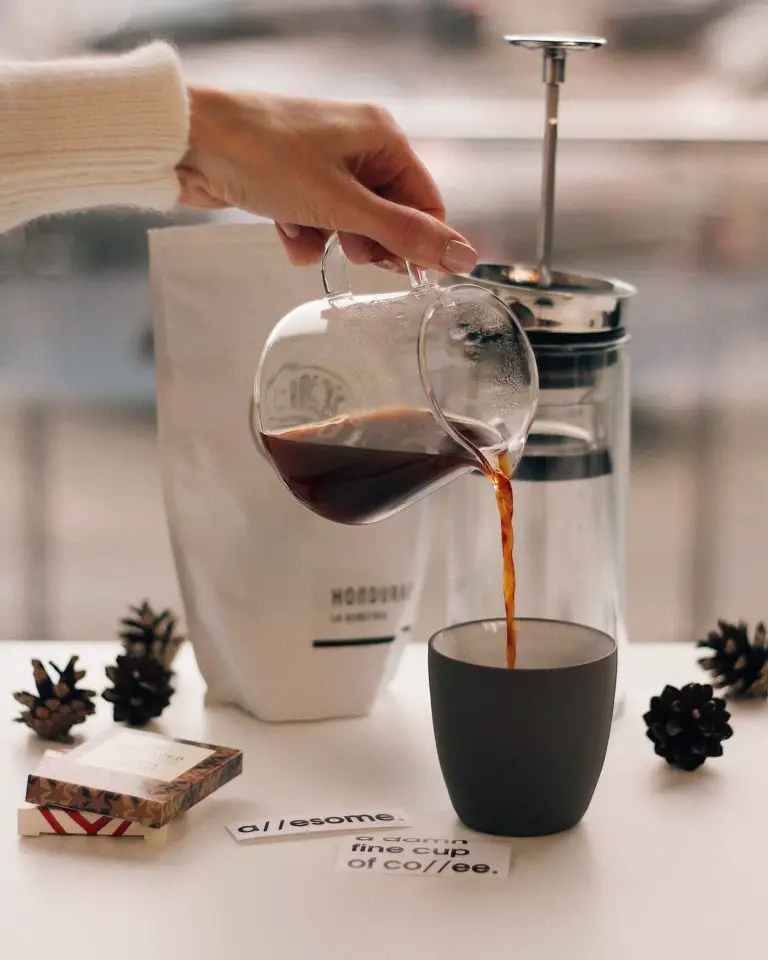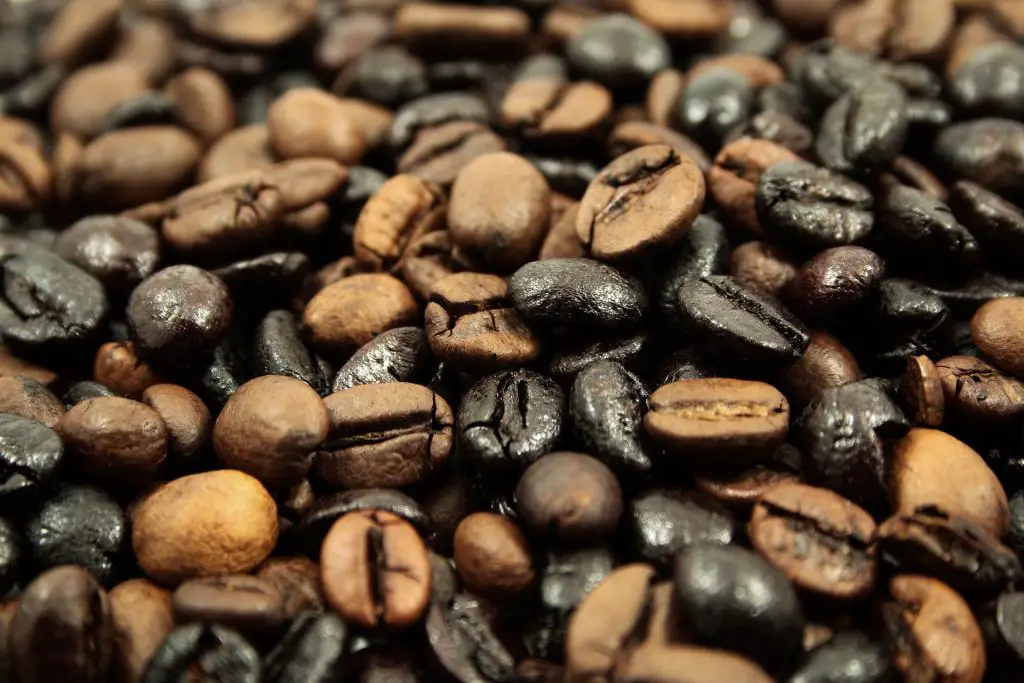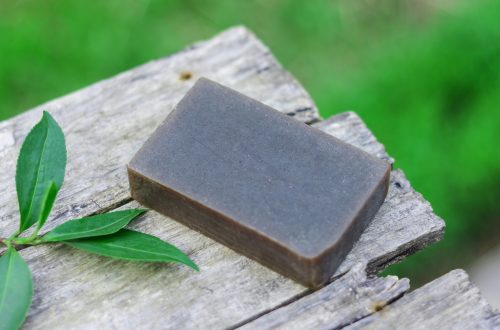Is French Press Coffee Bad for You?
Please note that some links may be affiliate links from which we may earn a commission. This is at no extra cost to you and keeps The Coffee Suite running. Thank you.
French press coffee is strong, surprisingly quick and a go-to for countless coffee lovers. Does everyone in your house start off their day with a cup of joe? It may just be a matter of time before you fall in love with a French press if you haven’t already!
Despite brewing up tasty, fresh coffee faster than almost any other method, French press coffee has received quite a bad rap. This is due to a compound called cafestol that’s leftover in press pot coffee. Let’s take a closer look at what cafestol is, why it’s unhealthy for you, and how to remove cafestol from French press coffee in an instant.
Is French Press coffee unhealthy?
French press coffee is unhealthier than regular coffee if served unfiltered due to the presence of cafestol and kahweol. However, once you remove the harmful component, cafestol, filtering it out using filter paper, you’re back to healthy java.
The only problem is that coffee filters made explicitly for French press coffee aren’t as commonly available as drip filters, but we’ll explain how to overcome this issue in a moment.
It would take drinking many cups of unfiltered French press coffee daily over an extended period to affect your cholesterol production, but unfiltered, it does nonetheless have an impact.
What is cafestol?
Cafestol is a molecule in coffee beans that raises low-density lipoprotein cholesterol (bad cholesterol) levels. Another similar compound also found in coffee is kahweol which is higher in concentration in Arabica. Cafestol and kahweol hijack receptors in your intestinal pathways, which is integral to regulating LDL cholesterol production.
The body’s natural cholesterol production process is directly regulated by the pathway hijacked, which makes cafestol the most powerful dietary cholesterol elevating compound in our body.
Studies show that just five cups of unfiltered French press coffee daily will raise cholesterol levels in the blood by between 6 and 8 percent.
What does cafestol do?
As our body’s cholesterol production pathway is hijacked, cafestol becomes responsible for us over-producing unhealthy LDL cholesterol and triglycerides. Elevated LDL cholesterol and triglycerides are connected to an increased risk of stroke and heart disease. A high presence of cholesterol narrows the arteries and clogs the artery walls, creating a fatty buildup.

Genetics, Cafestol And Metabolic Differences
While we should all stay vigilant over our heart health and cholesterol levels, a certain genetic mutation can raise the risk of disease for certain people. If you’re one of those few who metabolize coffee slowly at a lower rate than normal, then it takes just two or more cups a day to raise the risk of heart disease exponentially.
If you’re sensitive to caffeine showing any signs of intolerance, then we recommend you use an alternate means to brew up your daily cup of joe or filter your press coffee carefully. Filtering will remove the cafestol but ingesting sediment by accident can cause cholesterol to skyrocket in those with the rare metabolic mutation. Caffeine hypersensitivity doesn’t mean you have the mutation, but the chances are higher that you might.
Which coffee has the most cafestol?
Three main varieties of unfiltered coffee have high levels of cafestol and kahweol present, and it is these diterpenes that give coffee its oiliness. Turkish coffee, French press coffee and traditional Scandinavian boiled brews have cafestol and kahweol, which shows as drops of oil within the brew or coffee grounds floating atop.
Fortunately, filtered coffee contains such low levels of cafestol and kahweol that they can’t affect cholesterol production no matter how the coffee was made.
Related article:
Which coffee has the least cafestol?
Cafestol extraction was tested across several varieties of coffee. The lowest concentration of cafestol and smallest yield overall was mocha. Coffee made from mocha beans of the Arabica genus has the lowest cafestol levels, showing negligible concentrations even when unfiltered.
If you’re shopping for ground coffee with low cholesterol levels increasing compounds, keep in mind that darker roasts typically have less cafestol and kahweol, whereas raw green beans have the highest levels.

Bogus health claims
French press coffee hasn’t been linked to cancer or any other disease. Any claims to anything other than raising LDL cholesterol are a myth. The only other health consideration to keep in mind is that pressed coffee is far higher in caffeine than other coffees. This should only be an issue for those who drink a lot of coffee, or people who are caffeine intolerant.
High levels of caffeine, does, however, translate to higher levels of caffeic acid which is a powerful antioxidant. Controlled consumption can therefore grant widespread benefits including lowered inflammation, less fatigue, a diminished risk of cancer, and numerous neuroprotective effects. Four to five cups of coffee a day is accepted as the healthy recommendation even when you’re drinking super strong press pot coffee.
How to remove cafestol from French Press coffee?
Running your French press coffee through a filter will visibly remove any coffee grounds floating around or oily residue. Any paper coffee filter will do, but you’ll most likely need to cut it to size to fit into the French press unless you’re filtering straight into a mug or container.
If you plan to cut the paper to size, make sure it’s a match to the press’s diameter and place the filter directly beneath the plunger. Press down as you would typically, pouring carefully to make sure that the coffee passes through the paper and plunger.
It’s going to take more force than normal to press out your coffee. Just steadily apply pressure as you would before but harder and for longer.
We suggest opting for a large filter paper or metal coffee filter and filtering all the coffee in the press into a separate container first, rather than trying to strain it into a cup or cutting one to size.
There’s far less chance of messing. Use a big coffee filter as-is and clear multiple cups of French press of coffee in no time. Just pour steadily and evenly, making sure to never over-saturate the paper.
Whether to filter French Press coffee or not?
Some die-hard French press fans will refuse to filter their coffee. Unless you’re a coffee connoisseur, you may not pick up on the subtle differences in flavor between filtered French press and its unfiltered counterpart, but there’s a definite impact to texture.
Most of the slight oiliness that grants pressed coffee its silky consistency is lost after filtration. If you only drink a cup or two daily, then filtering may be unnecessary, especially if you’ve got your cholesterol under control but otherwise, rather be safe.

Is French Press coffee good once filtered?
The sheer conveniences makes brewing fresh coffee from beans easy, even when preparing enough to serve a big family. It’s not just good but rather an excellent form of coffee in many different ways.
Coffee steeps which adds dimensions of flavor that simply wouldn’t be there when brewing using a drip-machine. Other than cholesterol elevating cafestol, there’s nothing but boldness and rich flavor notes to be found in French press coffee.
Making coffee using a press is an art of its own, and over time you’ll learn how to make coffee with less sediment. Filtering is also far less time-consuming than one would expect.
How to filter French Press coffee?
There are two ways to filter French press coffee. Start off by brewing your coffee as per usual before getting it ready to filter. French press coffee can be filtered using conventional paper coffee filters or a metal coffee filter.
Regardless of which you use, filter the brew by pouring it through the filtration device into a clean container. As we mentioned, dispensing into a cup or mug is a messy affair.
Rather take your time and pour the whole pot of coffee through a filter slowly but methodically, making sure to clear away all oiliness and any grounds left present.
French press filters
While not all too common, French press coffee filters are available in some stores and online. Created specifically to fit a press pot coffee maker, there’s no easier way to get rid of cafestol and kahweol.
The only possible drawback is that you should expect to pay considerably more for French press filter paper – disproportionately more as compared to regular, inexpensive drip filters. Despite the price hike, most brands remain fairly affordable.
Related article:
Which is better, paper coffee filters or a metal filter?
All types of filters lower the concentration of cafestol and kahweol, but paper filters are more effective. Paper filters trap diterpenes much better than other filter types making them the number one choice for anyone concerned with health and cholesterol.
Unbleached paper coffee filters are the more natural choice, but you’ll need to rinse each filter through once with clean water, or there will be a slight taste of paper left in your coffee.
Otherwise, opt for high-quality bleached paper, and it won’t affect the healthiness of your brew or its taste. Bleaching leaves no hazardous chemicals behind.

Can I filter cafestol using cheesecloth?
Cheesecloth does not effectively filter cafestol and kahweol from coffee. The cloth doesn’t absorb enough of the oils. Drinking French press coffee filtered through cheesecloth would be arguably as unhealthy for your cholesterol levels as drinking it unfiltered.
Paper is one of the few compounds that filters diterpenes effectively, soaking up the oils instead of allowing them to pass through. This is also what makes paper filters work so much better than metal coffee filters.
Is pour over coffee bad for you?
Most pour over coffee is well-filtered, making it safe, however, it’s essential to filter pour over coffee properly to protect your cardiovascular health. You don’t want any residue falling through – zero coffee grounds.
Women who drank filtered coffee had a 15 percent lower mortality rate as compared to those who did not drink coffee at all. However, Gothenburg University in Sweden found that Norwegians who drink primarily unfiltered coffee have far higher levels of low-density lipoprotein cholesterol than people with other coffee drinking habits, placing them at a far higher risk of heart disease.

How to drinking French Press coffee and ingest less cafestol
Firstly, start by evaluating your roast. Mocha has the lowest cafestol, but if this isn’t to your liking or you can’t find it available, go for as dark of a roast as possible. Also, remember that everything is in the cup, so don’t go drinking that last sip.
The sentiment, leftover coffee grounds, and inherent oiliness will be high in cafestol. Even after filtration, there will inevitably be some sediment left which you should discard if you’re concerned with upsetting the balance of your cholesterol.
How to filter French Press coffee and retain flavor?
Unfortunately, the coffee grounds and oiliness of French press coffee is mostly lost once you pass it through a filter. The only way to negate this is to let your coffee steep for longer before giving it a final press and then filtering.
Always heat your plunger and brewing vessel with piping hot water before filling it with coffee and fresh water for brewing. This let’s you brew the full flavor from your coffee without sacrificing serving temperature.
Can I drink French Press coffee with high cholesterol?
After filtering the French press coffee, yes, you can drink it as a high cholesterol sufferer. However, most medical professionals will recommend that you switch to drip-brewed coffee in moderation instead.
If you’re in doubt and have any underlying cardiovascular issues or problems with your cholesterol, consult your doctor before drinking French press, Turkish, Scandinavian or pour over coffee.
Healthy French Press coffee tips
Keep these tips in mind, and you’ll always have full-flavored, cafestol-free coffee:
- Get the grind right – coarse is best for French press.
- Start from a warm press pot coffee maker.
- Use off-boiling point water settled at 93°F.
- Steep for long, but beware of over-extraction.
- 4 minutes for strong, 5 minutes for very strong, 6 for intense.
- Filter through coffee filter quickly but methodically.
You May Also Like

Coffee Tour in Naples, Italy: Experience Coffee Like a Local
January 3, 2023
Coffee Soap Benefits – 7 Reasons to Use Coffee Soap
January 15, 2022

